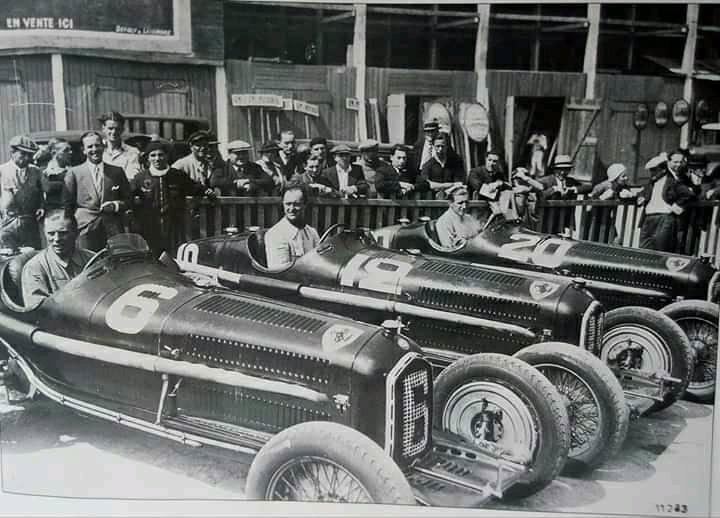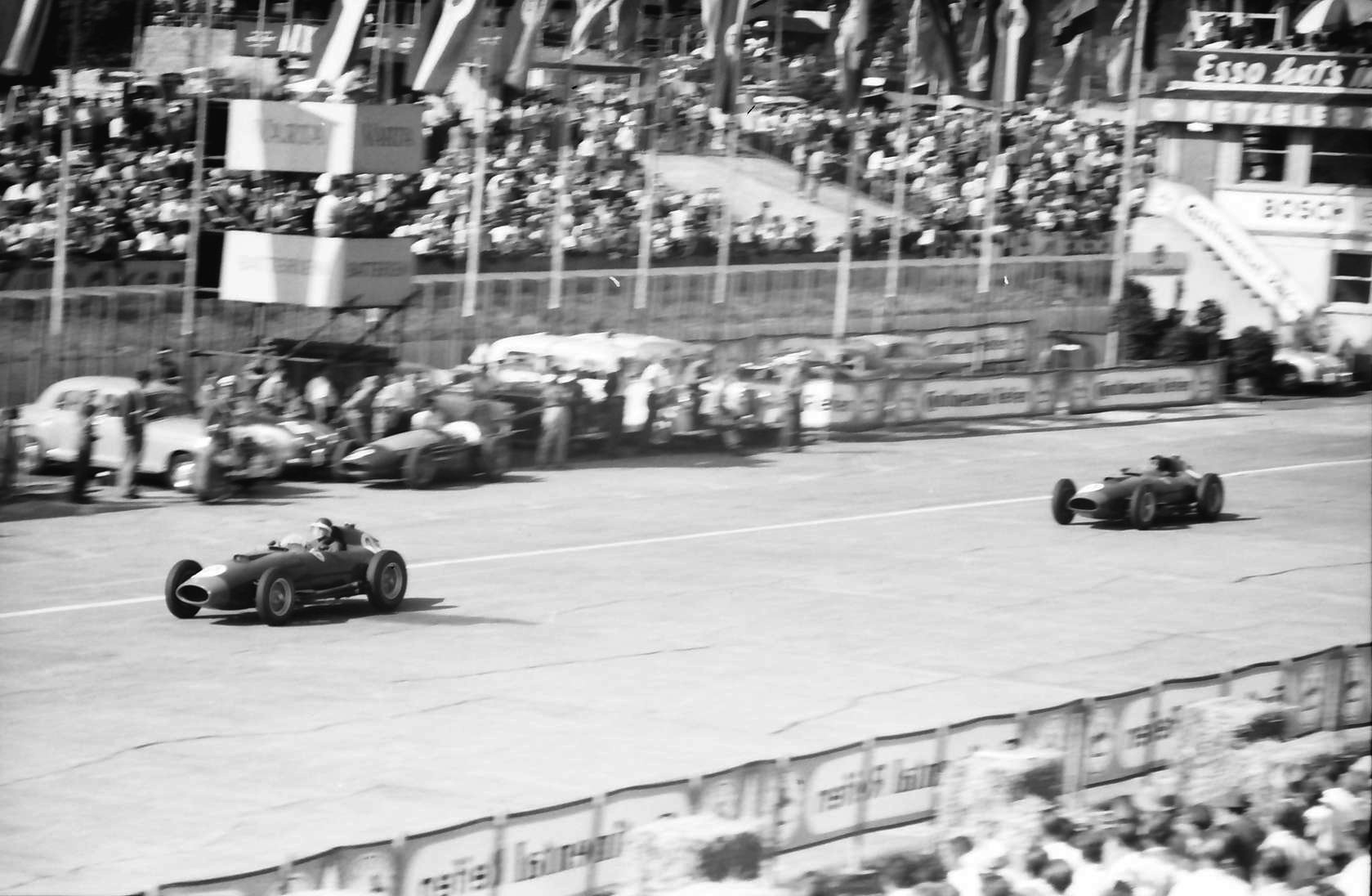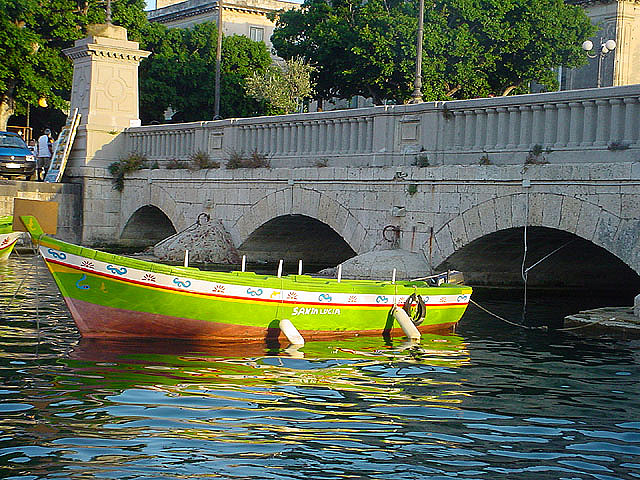|
Ferrari Monza
The Ferrari Monza is one of a series of cars built by Ferrari. In the early 1950s, Ferrari shifted from using the compact Gioacchino Colombo-designed V12 engine in its smallest class of sports racers to a line of straight-4, four-cylinder engines designed by Aurelio Lampredi. Inspired by the success of the light and reliable 2.5 L Ferrari 553 F1, 553 F1 car, the four-cylinder sports racers competed successfully through the late 1950s, culminating with the famed 500 Mondial and 750 Monza. V12 models used carburettor, downdraft carburettors located centrally in the "valley" of the engine, while the inline-engined fours used side-draft units and thus did not need the hood scoops. Almost all Monzas had of wheelbase, except for 250 and 860 Monza. 1953 1953 was a breakout year for Ferrari, beginning with the new World Sportscar Championship series. The company augmented their traditional V12-powered Ferrari 250 MM, 250 MM with the new Ferrari 340, 340 MM and Ferrari 375 MM, 375 M ... [...More Info...] [...Related Items...] OR: [Wikipedia] [Google] [Baidu] |
Ferrari
Ferrari S.p.A. (; ) is an Italian luxury sports car manufacturer based in Maranello. Founded in 1939 by Enzo Ferrari (1898–1988), the company built Auto Avio Costruzioni 815, its first car in 1940, adopted its current name in 1945, and began to produce its current line of road cars in 1947. Ferrari became a public company in 1960, and from 1963 to 2014 it was a subsidiary of Fiat S.p.A. It was Corporate spin-off, spun off from Fiat's successor entity, Fiat Chrysler Automobiles, in 2016. The company currently offers a large model range which includes several supercars, grand tourers, and one SUV. Many early Ferraris, dating to the 1950s and 1960s, count among the List of most expensive cars sold at auction, most expensive cars ever sold at auction. Throughout History of Ferrari, its history, the company has been noted for its continued participation in Auto racing, racing, especially in Formula One, where its team, Scuderia Ferrari, is the series' single oldest and most su ... [...More Info...] [...Related Items...] OR: [Wikipedia] [Google] [Baidu] |
Mike Hawthorn
John Michael Hawthorn (10 April 1929 – 22 January 1959) was a British racing driver who competed in Formula One from to . Hawthorn won the Formula One World Drivers' Championship in with Scuderia Ferrari, Ferrari, and won three Formula One Grands Prix, Grands Prix across seven seasons. In endurance racing (motorsport), endurance racing, Hawthorn won both the 1955 24 Hours of Le Mans, 24 Hours of Le Mans and the 1955 12 Hours of Sebring, 12 Hours of Sebring in 1955 with Jaguar Cars, Jaguar. In 1958, Hawthorn became the Formula One drivers from the United Kingdom, first of 10 British Formula One World Champions, beating Stirling Moss to the title by one point. He announced his retirement upon his triumph, having been profoundly affected by the death of his teammate and friend Peter Collins (racing driver), Peter Collins two months earlier during the . Three months after retiring, Hawthorn died in a road accident in Guildford, driving his Jaguar 3.4-litre, Jaguar 3.4 Litre. T ... [...More Info...] [...Related Items...] OR: [Wikipedia] [Google] [Baidu] |
De Dion Tube
De Dion rear axle A de Dion axle is a form of non-independent automobile suspension. It is a considerable improvement over the swing axle, Hotchkiss drive, or live axle. Because it plays no part in transmitting power to the drive wheels, it is sometimes called a "dead axle".Setright, p.515. A powered de Dion suspension uses universal joints on both ends of its driveshafts (at the wheel hubs and at the differential), and a solid tubular beam to hold the opposite wheels in parallel. Unlike an anti-roll bar, a de Dion tube is not directly connected to the chassis, and is not intended to flex. In suspension geometry it is a beam axle suspension. History The de Dion axle was named after Comte Jules-Albert de Dion, founder of French automobile manufacturer De Dion-Bouton. The axle, however, was invented around 1894 by co-founder Charles Trépardoux, Georges Bouton's brother-in-law, for use on the company's steam tricycles. G.N. Georgano, p. 27. Advantages and disadvantages ... [...More Info...] [...Related Items...] OR: [Wikipedia] [Google] [Baidu] |
Ferrari 500 F2
The Ferrari 500 was a Formula 2 racing car designed by Aurelio Lampredi and used by Ferrari in and , when the World Championship was run to F2 regulations. Racing history For 1952, the FIA announced that Grand Prix races counting towards the World Championship of Drivers would be run to Formula 2 specification rather than to Formula 1, after the withdrawal of Alfa Romeo from the sport. Ferrari were the only team to have a car specifically designed for the new formula. The car was powered by an inline four-cylinder engine which was mounted behind the front axle, improving weight distribution. Alberto Ascari used the car to win his first world championship, winning all but one race with the simple 500. The race he missed was because he was driving the 4.5-litre Ferrari at the Indianapolis 500, however Ferrari won the race he was absent from as well. The following season, Ascari won his second world championship, and Ferrari won all but the final race, which was won by Juan ... [...More Info...] [...Related Items...] OR: [Wikipedia] [Google] [Baidu] |
Lancia D24
The Lancia D24 was a sports racing car introduced by Lancia in 1953, and raced in the 1953 and 1954 seasons. It kept the overall layout of its predecessor the D23—that is a multi-tubular frame chassis, double wishbones/ De Dion suspension, transaxle transmission and a barchetta body—but had a large 3,284 cc V6 engine. The V6 produced , giving the car a top speed of . Some of the D24's most significant overall victories are those by Juan Manuel Fangio in the 1953 Carrera Panamericana, by Alberto Ascari in the 1954 Mille Miglia, and by Piero Taruffi in the 1954 Targa Florio and Giro di Sicilia. In 1955, the President of Lancia presented a D24 to President Juan Perón of Argentina who raced it nationally in the blue and yellow national livery. It was returned to Italy in the 1980s and restored by the Count Vittorio Zanon. This is one of just two D24s in existence; the other is in the Lancia Museum. Racing Lancia D24 Spider won 1954 Mille Miglia driven by Alberto Asc ... [...More Info...] [...Related Items...] OR: [Wikipedia] [Google] [Baidu] |
Mille Miglia
The Mille Miglia (, ''Thousand Miles'') was an open-road, motorsport Endurance racing (motorsport), endurance race established in 1927 by the young Counts :it:Franco Mazzotti, Francesco Mazzotti and Aymo Maggi. It took place in Italy 24 times from 1927 to 1957 (13 times before World War II, and 11 times from 1947). Like the older Targa Florio and later the Carrera Panamericana in Mexico, the ''MM'' made grand tourers like Alfa Romeo, BMW, Ferrari, Maserati, Mercedes-Benz, and Porsche famous. The race brought out an estimated 5 million spectators. From 1953 until 1957, the Mille Miglia was also a round of the World Sports Car Championship. Since 1977, the "Mille Miglia" has been reborn as a regularity race for Classic car, classic and vintage cars. Participation is limited to cars, produced no later than 1957, which had attended (or were registered to) the original race. The route (Brescia–Rome round trip) is similar to that of the original race, maintaining the point of depa ... [...More Info...] [...Related Items...] OR: [Wikipedia] [Google] [Baidu] |
Luigi Villoresi
Luigi "Gigi" Villoresi (16 May 1909 – 24 August 1997) was an Italian racing driver, who competed in Formula One from to . Villoresi contested 34 Formula One Grands Prix across seven seasons for Italian teams Ferrari, Maserati, Lancia, and Centro Sud. He achieved eight podiums and one fastest lap, finishing fifth in the and World Drivers' Championships with Ferrari. Biography Born in Milan, Lombardy, and nicknamed "Gigi", Villoresi was the older brother of race car driver Emilio Villoresi, and co-piloted with him in several races at the beginning of their careers. From a prosperous family, Villoresi could afford to buy a car and began competing in local rallies at the age of twenty-two with a Lancia Lambda and a few years later acquired a Fiat Balilla with which he and his brother Emilio competed in the Mille Miglia. In 1935, he raced in the Coppa Ciano, finishing third and went on to capture the Italian driving championship in the 1100cc sports car class. The follow ... [...More Info...] [...Related Items...] OR: [Wikipedia] [Google] [Baidu] |
12 Hours Of Casablanca
The 12 Hours of Casablanca was a sports car Endurance racing (motorsport), endurance race organised on the route of the future Ain-Diab Circuit in Morocco. Only two editions were held in 1952 and 1953, before the race was replaced by the Moroccan Grand Prix in Agadir for the 1954 season. History The race was held on a road circuit, partially on the main road from Casablanca, that was initially 4.2 kilometers long in 1952. By 1953, the route was changed to 3.26 kilometers. The competition was intended for sports racing cars and for passenger cars as well. The starting grid was of a 'Standing start#Le Mans, Le Mans start'-type. 1952 In December 1952, the first edition of the 12 Hours of Casablanca race was held. 24 entrants had started the race, but only 14 of them finished and were classified. 1953 The second edition of the endurance race was held in 1953. This time 17 cars finished the race. Casimiro de Oliveira and Alberto Ascari had crashed during practice in their Ferrari 3 ... [...More Info...] [...Related Items...] OR: [Wikipedia] [Google] [Baidu] |
500 TR
5 (five) is a number, numeral and digit. It is the natural number, and cardinal number, following 4 and preceding 6, and is a prime number. Humans, and many other animals, have 5 digits on their limbs. Mathematics 5 is a Fermat prime, a Mersenne prime exponent, as well as a Fibonacci number. 5 is the first congruent number, as well as the length of the hypotenuse of the smallest integer-sided right triangle, making part of the smallest Pythagorean triple ( 3, 4, 5). 5 is the first safe prime and the first good prime. 11 forms the first pair of sexy primes with 5. 5 is the second Fermat prime, of a total of five known Fermat primes. 5 is also the first of three known Wilson primes (5, 13, 563). Geometry A shape with five sides is called a pentagon. The pentagon is the first regular polygon that does not tile the plane with copies of itself. It is the largest face any of the five regular three-dimensional regular Platonic solid can have. A conic is determ ... [...More Info...] [...Related Items...] OR: [Wikipedia] [Google] [Baidu] |
625 TF
6 (six) is the natural number following 5 and preceding 7. It is a composite number and the smallest perfect number. In mathematics A six-sided polygon is a hexagon, one of the three regular polygons capable of tiling the plane. A hexagon also has 6 edges as well as 6 internal and external angles. 6 is the second smallest composite number. It is also the first number that is the sum of its proper divisors, making it the smallest perfect number. It is also the only perfect number that doesn't have a digital root of 1. 6 is the first unitary perfect number, since it is the sum of its positive proper unitary divisors, without including itself. Only five such numbers are known to exist. 6 is the largest of the four all-Harshad numbers. 6 is the 2nd superior highly composite number, the 2nd colossally abundant number, the 3rd triangular number, the 4th highly composite number, a pronic number, a congruent number, a harmonic divisor number, and a semiprime. 6 is also the first ... [...More Info...] [...Related Items...] OR: [Wikipedia] [Google] [Baidu] |
Carrozzeria Autodromo
Carrozzeria Autodromo Modena (Autodromo Coachworks, Modena), commonly known as Autodromo or CAM, was an Italian coachbuilder of buses and trolleybuses that was based in Modena, Italy, which in its early years produced a few race car bodies before concentrating on bodies for commercial vehicles. At one time, Autodromo was one of the best-known Italian bus manufacturers. It was in business from 1949 to 2004. In the 1990s, in partnership with MAN Nutzfahrzeuge AG of Germany, Autodromo built some of the first low-floor buses and trolleybuses for the Italian market. History The company, initially organised as a cooperative, was founded in 1949 in Modena under the name ''Cooperativa Carrozzai Modenesi''. In the very first year, its legal form was converted into a limited company (''Società a responsabilità limitata''); at the same time, the company was renamed ''Carrozzeria Autodromo Modena''. The new name referred to the Autodromo di Modena race track, which was under construction ... [...More Info...] [...Related Items...] OR: [Wikipedia] [Google] [Baidu] |
Barchetta
Barchetta () is an Italian language, Italian word commonly translated into English as "little boat". The term originally referred to a small skiff used for recreational purposes. It is also applied to some items of clothing, as well as being used in automobile styling, where it describes a class of open-top, two-seat sports cars. Etymology Italian The root of barchetta is ''barca'', the Italian word for "boat". In Italian "small boat" would be ''piccola barca''. The use of the diminutive suffix ''-etta'', the feminine form of ''-etto'', confers the sense of something small or tiny with a connotation of endearment or affection towards the object. The plural form of barchetta is ''barchette''. French In French the equivalent term is ''barquette''. The root word ''barque'', which in French refers to a boat with three or more masts, is combined with the diminutive suffix ''-ette''. In common use, barquette may refer to a shallow container or tray. Its use when describing an automob ... [...More Info...] [...Related Items...] OR: [Wikipedia] [Google] [Baidu] |









